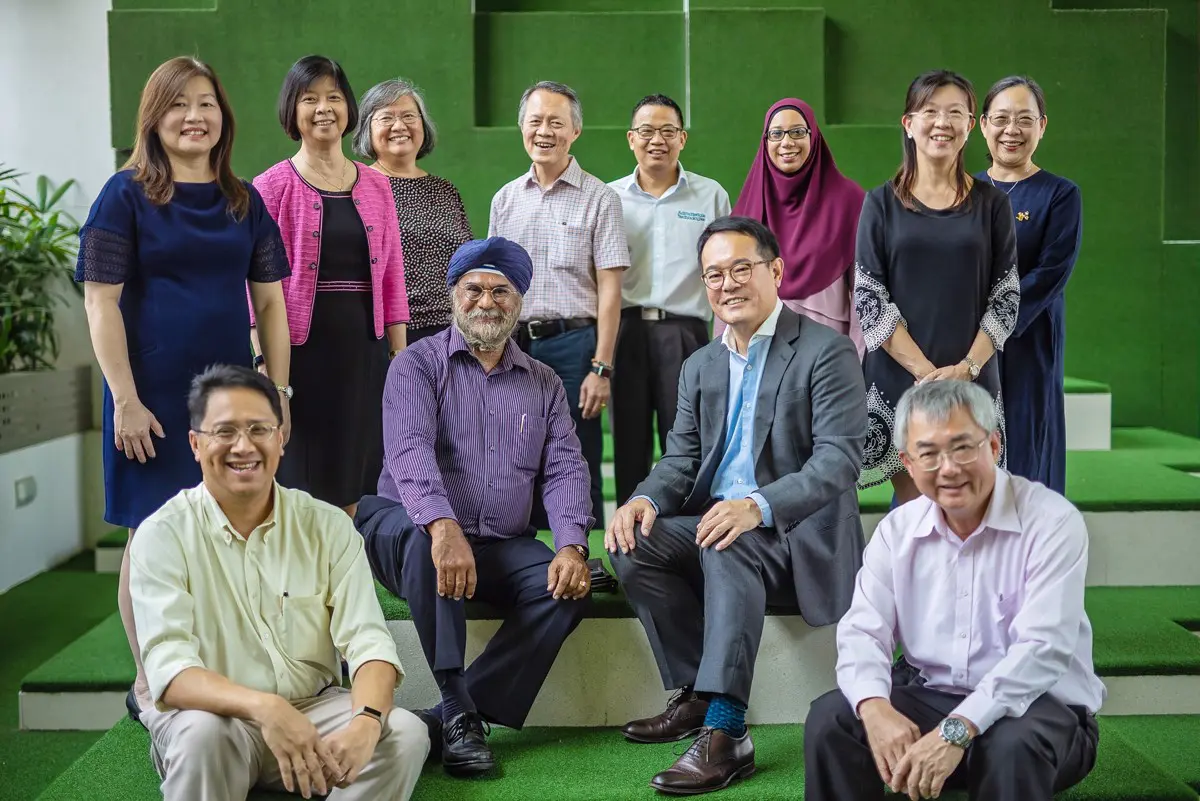Agilent Technologies
Modern chemical instrumentation for fast screening of multi-pesticide residues in organic and non-organic vegetables
As consumers become more discerning, they are also increasingly wary about what they consume. Hence, over the last few years, fresh and processed food products have come under greater scrutiny to ensure product safety when new food products are introduced into the local market. Scientific approaches in this area increase consumer confidence and also allow enterprises to remain competitive.
Partnering with Agilent Technologies, a global leader in life sciences, diagnostics, and applied chemical markets, researchers from the Centre of Innovation for Complementary Health Products (COI-CHP) have developed an advanced liquid-chromatography coupled with triple quadrupole (LC-QqQ) instrument-based chemical analysis method for fast screening of multi-residue pesticides in complex product matrices. This method has been applied to test organic-labelled and conventional vegetables (Figures 1 and 2), as well as various fruits, wines and TCM herbs.
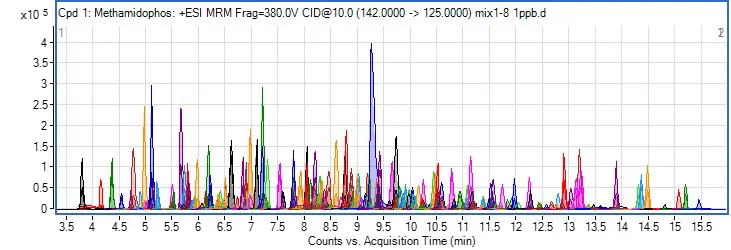 Figure 1 Multi-reaction-monitoring (MRM) chromatograms of the 244 pesticide standards
Figure 1 Multi-reaction-monitoring (MRM) chromatograms of the 244 pesticide standards
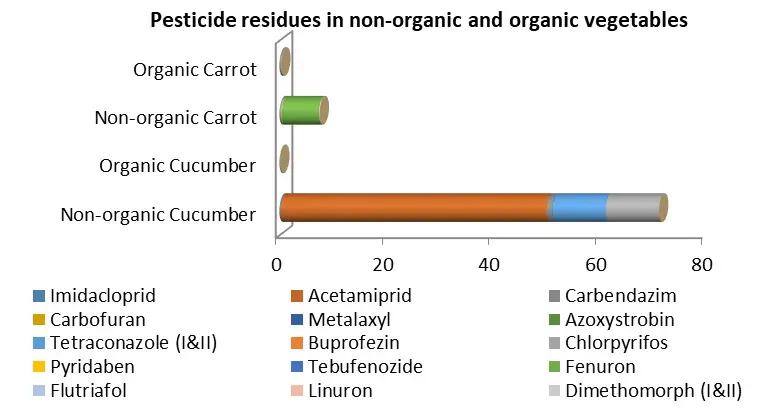 Figure 2 Pesticide residues in non-organic and organic cucumbers and carrots
Figure 2 Pesticide residues in non-organic and organic cucumbers and carrots
Through this scientific project, students had the opportunity to undergo comprehensive skills-based training using the latest analytical techniques and equipment.
GNC Singapore
A low cost and rapid testing method for product quality assessment for LAC Activated Liver Protector™
Globally, the health product industry is rapidly growing, thus product quality control (QC) is of vital importance to ensure that herbal products are effective and safe to consume.
LAC Activated Liver Protector™ (Figure 1) is a health product that is formulated with Traditional Chinese Medicinal (TCM) herbs to promote and protect liver health.
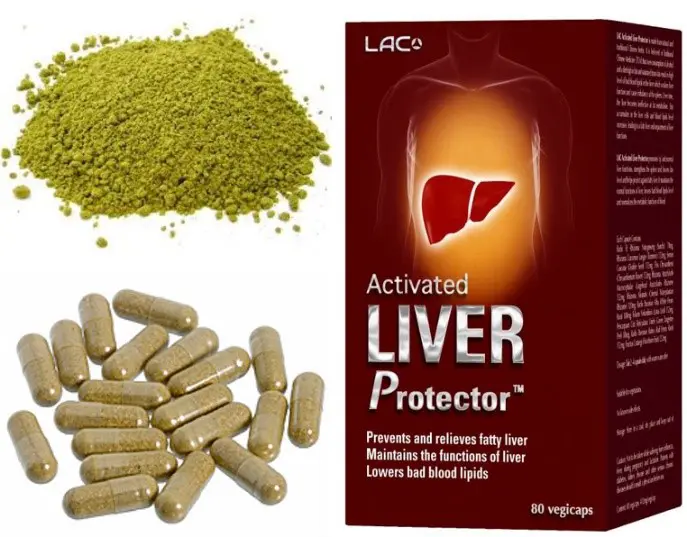 Figure 1. LAC Activated Liver Protector™
Figure 1. LAC Activated Liver Protector™
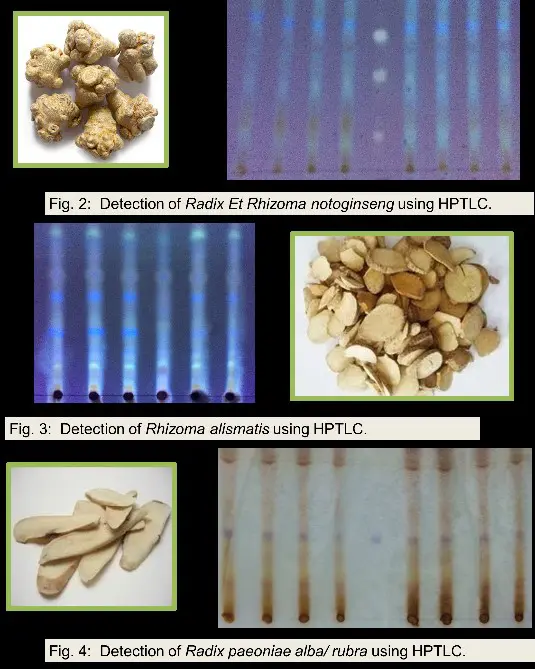
Commissioned by GNC Singapore, ASC’s Centre of Innovation for Complementary Health Products (COI-CHP) conducted this study for long-term QC monitoring of the herbal product. In this project, a high performance thin layer chromatography (HPTLC) fingerprinting assay was developed for qualitative identification of the herbal ingredients (Figures 2 to 4) used in the GNC herbal product. Upon successfully developing this HPTLC assay, it was then used as a low cost yet rapid analysis for product QC monitoring.
Being involved in such industry projects help to equip our students with skillsets needed in various industries such as the pharmaceutical, petrochemical, and the hospital diagnostic laboratories.
Life3 Biotech
An urban photobioreactor for algae farming
ASC has collaborated with Life3 Biotech to set up an urban algae system for public showcase. From algae cultivation, reactor assembly, configuration design to operation of the reactor. Four of our Diploma in Chemical Engineering (CHE) students were involved in this collaborative project led by staff from the Water Technology domain as part of their Student Internship Programme and Major Project. Through their involvement, they learnt some important concepts of reactor engineering and project coordination, as well as experienced the camaraderie of teamwork.
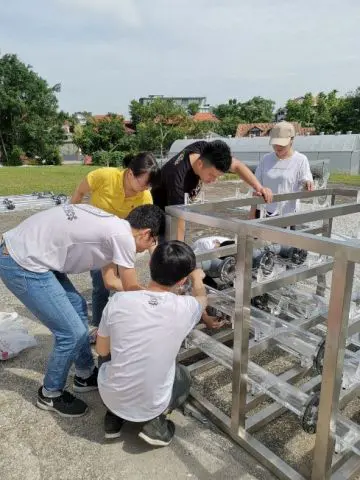
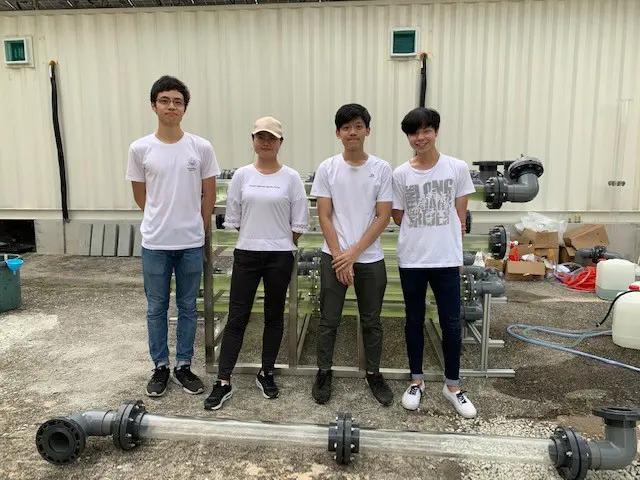 Our CHE students ready to build the photobioreactor
Our CHE students ready to build the photobioreactor
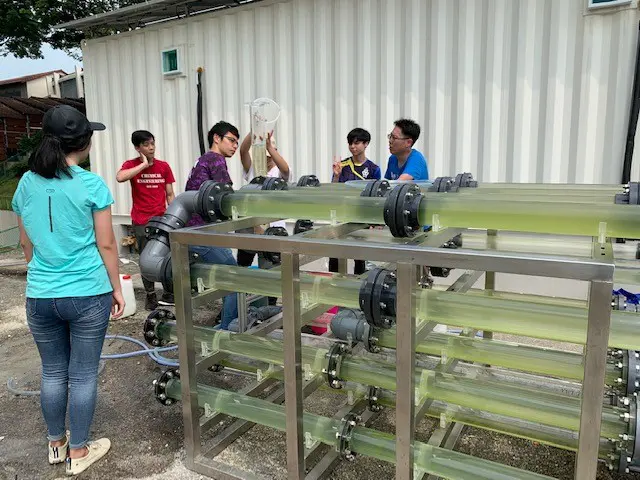 Checking the finally constructed reactor, ensuring all systems go!
Checking the finally constructed reactor, ensuring all systems go!
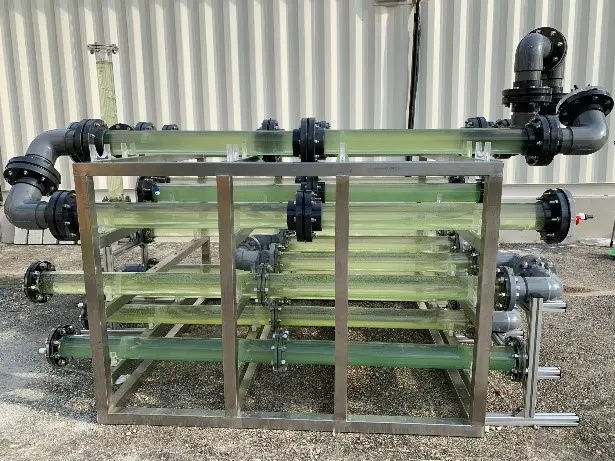
Steris Corporation, USA
Developing a more efficient biological indicator with fast growing mutants of G. stearothermophilus
In modern healthcare and research institutions, sterilization by wet heat is a crucial process used to avoid bacterial contamination. However, validation is required to ensure the efficacy of this steam sterilizing process to assure end-users that the sterilized equipment are safe for use.

The bacterium, Geobacillus stearothermophilus, is commonly used as a biological indicator for sterility monitoring due to its thermophilic nature. Currently, the turnaround time for this biological indicator is between 4 to 6 hours due to the bacterium’s prolonged spore germination process. With an increasing demand for a faster turnaround biological indicator, ASC conducted a project for Steris Corporation, USA that focused on the development of mutants of G. stearothermophilus with reduced spore germination time.
Some students from the Diploma in Biotechnology were involved in identifying the G. stearothermophilus spore germination pathways, and cloning the genes (GerB and GerK) responsible for spore germination into fluorescent protein plasmids. These students had the opportunity to be introduced to the sterilisation and validation concepts and trained in basic laboratory skills, as well as understanding more about microbiology and biological indicators.
Citiponics Pte Ltd
Integrated Intensive Urban Farming Solutions (I2UFS) for indoor farming and nursery management
In a conventional system, the life cycle of food consumes high amounts of energy and resources. Moreover it also releases significant amounts of greenhouse gas emissions into the environment. By bringing food production into the cities that taps on current renewable resources, this helps to reduce the pressure of meeting food supply demands caused by rapid urbanization and population growth, and the use of remaining land and energy resources.
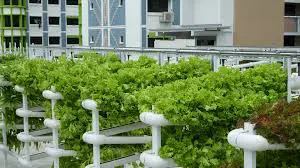 Photo courtesy of Citiponics Pte Ltd
Photo courtesy of Citiponics Pte Ltd
Led by the School’s Centre for Research and Opportunities in Plant Science (CROPS), this project with Citiponics Pte Ltd focused on diversifying the cultivation of crops on a rooftop farm. This is to help farmers not only adopt the developed Good Agricultural Practices (GAPs), but also to acquire the cultivation knowhow.
The technologies and knowhow developed under this project included nursery management practices for selected crops, establishing germination and seed processing technologies, enhancement of seedling vigour, and creating GAP standards for selected crops under study.
Some students from the Diploma in Biotechnology were involved in this project had the rare opportunity to learn the importance of urban farming in the Singapore context, as well as the basic techniques of farming.
Parkway Cancer Centre
Asian modular dysphagia meals made simple!
Singapore is greying at a faster pace compared with the last decade. And the Quality of Life is compromised during the last 8 years of a person’s life due to non-communicable diseases.
The physiological process of aging, stroke, and certain cancers affect ones swallowing of regular diets at old age. As such dysphagia (a swallowing disorder) affects more than 60% of elderly nursing home residents, patients after stroke, and around 30% of the seniors who are admitted to hospital. When chewing and swallowing are compromised, the recipes offered are even more important to prepare meals for such persons. Sensing the increasing needs, the Centre for Applied Nutrition Services (CANS) along with some students from the Diploma in Applied Food Science and Nutrition, as well as Diploma in Baking and Culinary Science, developed 15 modular therapeutic recipes to suit the different levels of texture and consistency based on the new International Dysphagia Diet Standardization Initiative (IDDSI).
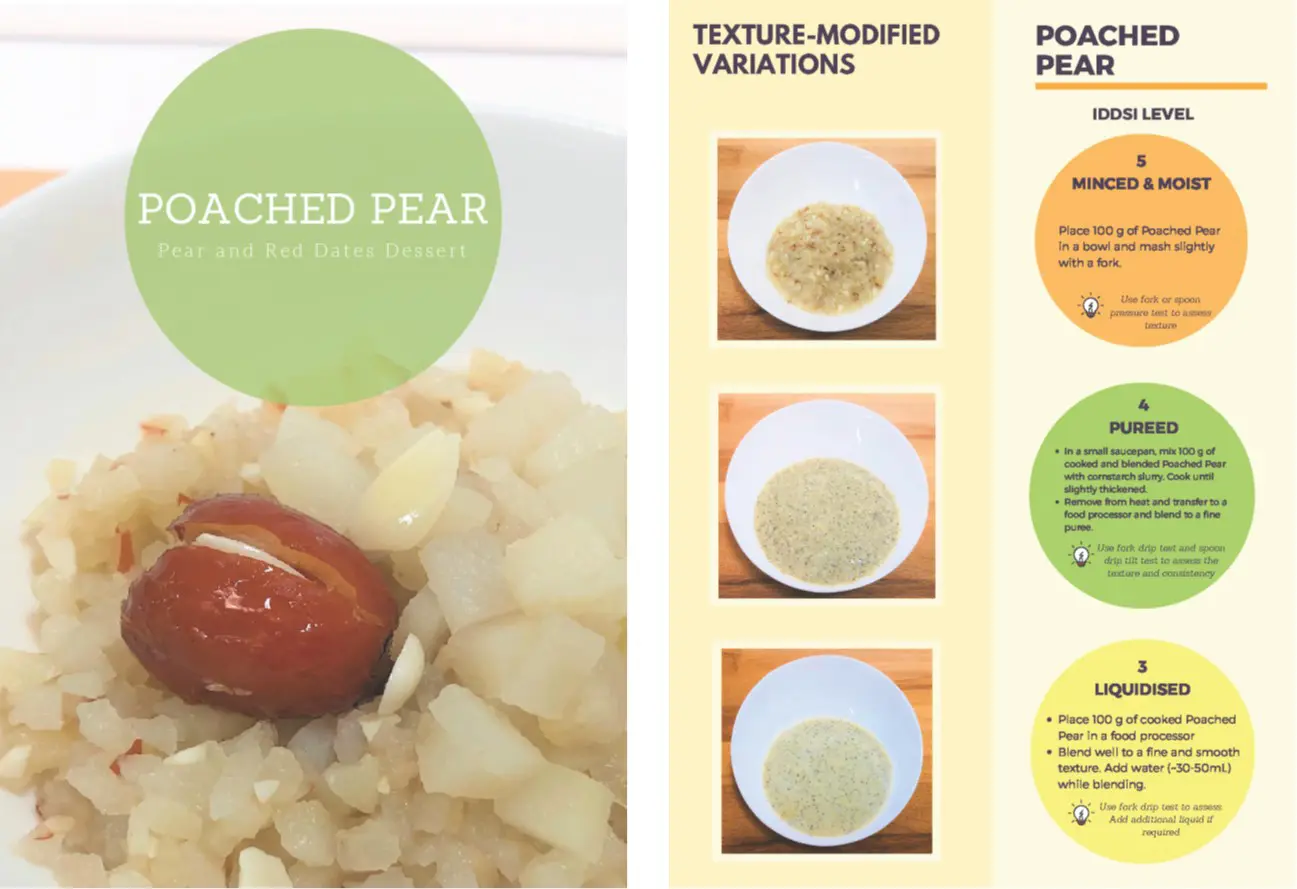 Sample of a developed recipe card on Poached Pear illustrating the different IDDSI levels.
Sample of a developed recipe card on Poached Pear illustrating the different IDDSI levels.
These recipes were carefully adjusted to retain their unique Asian flavours. This was especially so during the preparation and cooking processes as they had to meet the guidelines set at each dysphagia diet levels. This collection of recipes makes it easy for patients and caregivers to savour their favourite local dishes at the comfort of their homes. A part of this project was done in collaboration with Parkway Cancer Centre and with the funding received from Temasek Polytechnic Research Funding.
Oceanus Group
Helping farmers to enhance abalone culture
Over 100 abalone species can be found across the world’s oceans but don’t expect to find any of these wild abalones at your next wedding banquet or Chinese New Year celebration. Due to both restricted fishing and increasing demand for these very expensive molluscs, over 95% of abalone consumed are actually cultured on farms. One of the challenges faced by the farms is the abalone’s slow rate of growth. It takes 2 to 5 years for the abalone to reach an acceptable market size, thus significant financial investment and time are required.
ASC’s Centre for Aquaculture and Veterinary Science (CAVS) collaborated with Oceanus Group to conduct a number of projects aimed at testing different methods to accelerate growth, as well as to attempt producing larger specimens of abalone. These projects focused on feed, nutrition and environmental stressors. Example of projects included the study on the effect of temperature tolerance limits on the survival and growth of Japanese abalone (Haliotis discus hannai) and genetic profiling of laggards and normal growing abalone juveniles.
 ARF Research staff with VET students at their poster presentation
ARF Research staff with VET students at their poster presentation
The studies were conducted in CAVS’ Aquaculture Research Facility (ARF) involving students from the Diploma in Veterinary Technology. These projects required students to conduct husbandry operations, regular health and water monitoring, implement feeding and nutritional regimes, as well as handling and care of the abalone. The opportunity to work so closely with live abalone allowed the students to gain intimate insight into the life cycle of the abalone, as well as develop a deeper appreciation for the knowledge and skills involved in abalone farming.
Wildlife Reserves Singapore (WRS)
Developing a diagnostic assay to detect a neurological condition in parrots
Which bird has been consistently recognised as the smartest bird in the world? The answer is the Kea, a type of parrot.
Parrots or psittacines are some of the smartest animals on the planet and birds like the Kea can even solve puzzles that require logic. There are nearly 400 species of parrots in the world and you may have witnessed the impressively large vocabulary of the African Gray parrot or marveled at the striking beauty of the brilliantly colored Macaws.
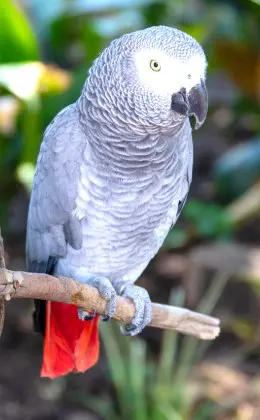 African Grey Parrot
African Grey Parrot
 Macaw
Macaw
Few would argue that birds from the parrot family are amazing but did you know that captive parrots are highly susceptible to a chronic and often fatal neurological condition called proventricular dilatation disease (PDD). Although PDD was first reported in the 1970s, it wasn’t until 2008 that the causative agent was identified as Avian Bornavirus (ABV) but the precise routes of transmission are still unknown. PDD targets the digestive and nervous systems, and signs include dehydration, regurgitation, stool containing undigested food, weight loss, depression, weakness and loss of control of bodily movements. However, positive diagnosis is difficult as no sign is definitive for PDD.
In order to screen the movement of birds from overseas zoo’s as part of biosecurity measure, and protect the psittacines in Jurong Bird Park, the school’s Centre for Aquaculture and Veterinary Science (CAVS) collaborated with the Wildlife Reserves Singapore (WRS) to develop an Enzyme-linked Immunosorbant Assay (ELISA) for the detection of antibodies against Bornavirus in the infected birds. The presence of specific serum antibodies against ABV is indicative of either past and/or present exposure. The objective of developing this serodiagnostic test is to complement WRS on their RT-PCR test outcomes, as it is not conclusive in cases where it fails to detect ABV infection. The work was carried out by a team of CAVS researchers in the Veterinary Diagnostic Facility. The development of the immunoassay was completed and has successfully screened numerous blood samples collected from the birds from WRS.
National Parks Board
Recycling urban wastes into TP Recycled Ecological Blocks (REB) and green park benches
Can 700,000 tonnes of wood and horticultural waste be put to good use? This project presents the first and only viable technology (environmentally & economically) that could recycle wood & horticultural wastes and incineration fly ash into building materials for non-structural / structural applications, without having to use adhesives or additional heating and pressure.
This research project led by ASC’s Centre for Urban Sustainability (CUS) created a safe and viable technique at ambient conditions (at room temperature and atmospheric pressure) to process urban wastes into Recycled Ecological Blocks (REB) that can be used to construct outdoor and park facilities, as well as DIY (do-it-yourself) furniture. The use of REB building materials would not compromise environment and eliminate the need for high heat, pressure and adhesives application during its production.
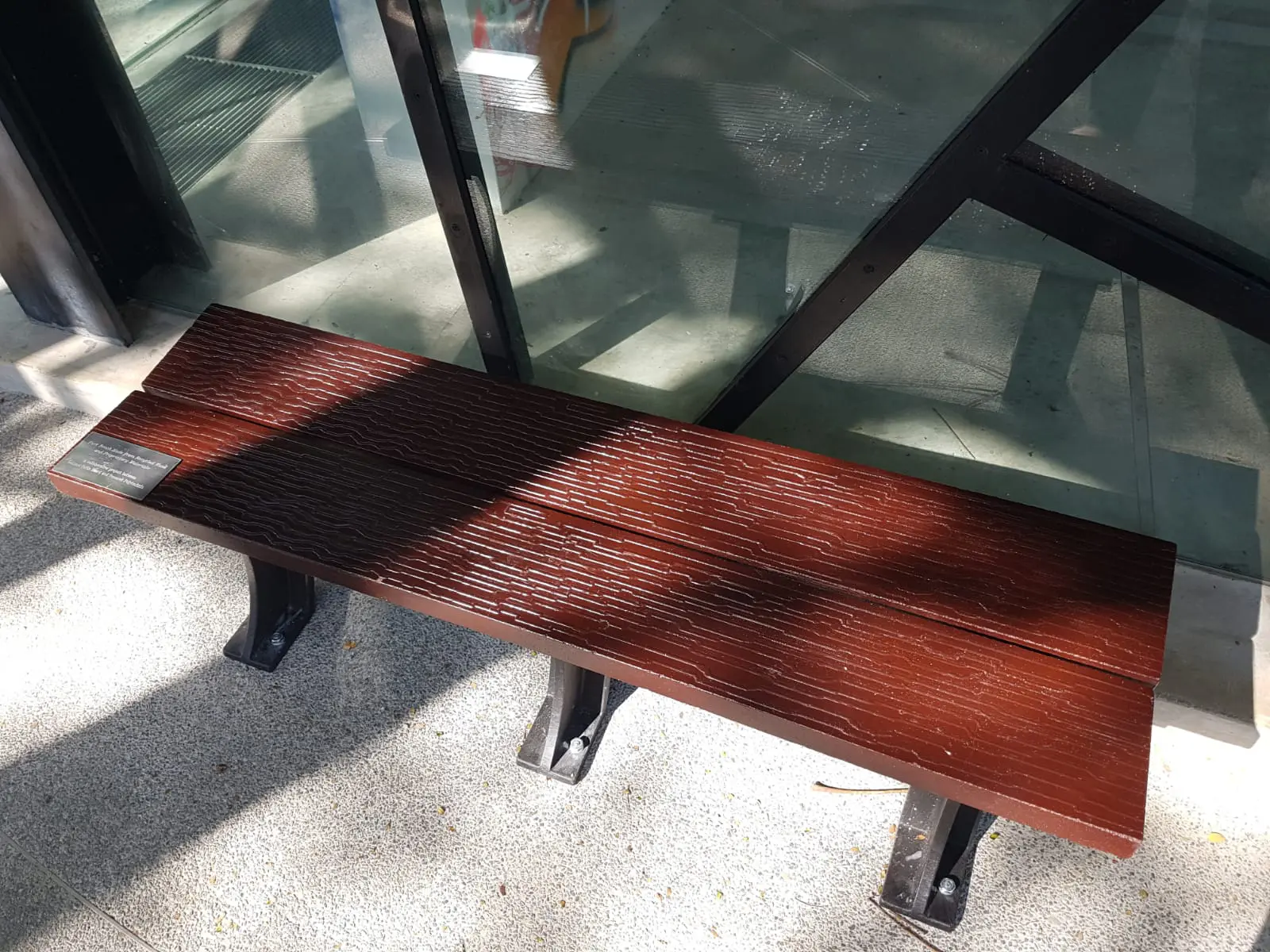
With REB, the CUS team of researchers also prototyped green park benches that are six times cheaper than similar park benches in the market too! They require 2.67 times less manpower to build them and offer increased productivity by up to 62.5% per year. In collaboration with the National Parks Board, these benches were made from cementitious materials incorporating wood and horticultural wastes collected from Bedok Reservoir Park, and then installed in the park for public use.
The innovative contributions of this project had the team also winning a Silver for the MOE Innergy Award 2019!
NTUC Foodfare
TP and NTUC launch Ready-To-Eat meals suitable for people with diabetes.
Guilt-free rendang, anyone?
Staff and students from TP’s School of Applied Science have developed the first low-GI ready-to-eat meals to be endorsed by the Health Promotion Board (HPB) as being suitable for those with diabetes, and bear the Healthier Choice label. Called Chef's Finest Low-GI, this new line of delicious ready-to-eat meals was recently launched by NTUC Foodfare.
The lower-glycaemic index (GI) meals come in five flavours: Nonya rendang chicken, Vietnamese lemongrass baked chicken, Teochew braised duck, braised soy chicken, and baked cheese seafood tomato rice. All the microwaveable frozen meals are made with brown rice and barley instead of white rice, and are certified halal.
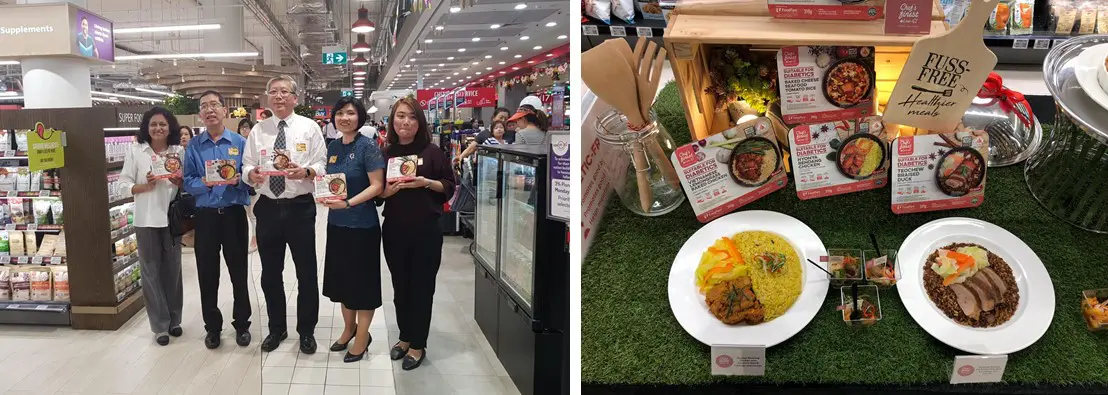 Priced between $3.90 and $5.90, they are available at more than 20 NTUC FairPrice outlets
Priced between $3.90 and $5.90, they are available at more than 20 NTUC FairPrice outlets
Dragonwana Aquarium Trading Pte Ltd
Innovative eco-friendly beads made for water treatment
Wondered how a more environmentally-friendly method of having cleaner water? Researchers from the Water Technology domain under the Centre for Aquaculture and Veterinary Science (CAVS) devised a convenient algae-based modular filter that would remove soluble nutrients from open waters like ponds and even reservoirs.
With the assimilation of soluble nutrients, the team discovered that this innovative filter competed with the native algae and planktons present in the water. Microalgae is known to being the fastest-growing photosynthetic organism. In their process of growing, they would deplete nutrients present which will subsequently result in the elimination of native algae and planktons. These modules of filter can be sized to fit different volumes of influence and capacity. Also by manipulating the formulation of the algae beads to keep out unwanted micro-organisms growth, the modules will be an attractive filter to restore the quality of green waters. Moreover, as the filter’s “by-products” are beads saturated with microalgae, these could also be conveniently harvested and used as animal feeds.
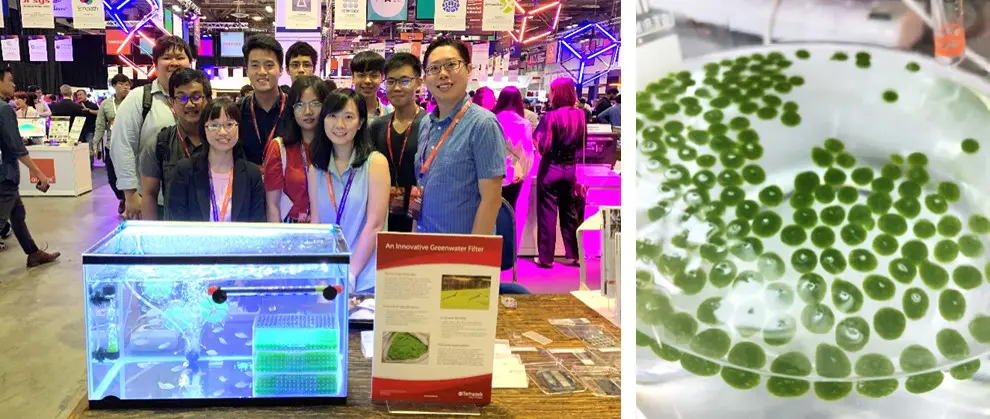 The research team and their innovative algae-based modular filer in action!
The research team and their innovative algae-based modular filer in action!
With our reservoirs function to maintain water continuity and sustainability, and our open ponds serve as aesthetic features in every park, the market outlook for this proposed technology is promising. This developed filter can also be deployed in domestic and commercial aquariums as a water-saving device.
In this project, some students from the Diploma in Chemical Engineering and Diploma in Biotechnology were involved and trained in algae culture, techniques to conduct performance trials, conduct chemical and water quality analysis, as well as create prototype.
